This site contains affiliate links. I may earn a small commission, at no extra cost to you.
Figuring out you have fungal acne in the first place is hard, let alone figuring out how to treat it!
So in this post i’ll share the 15 best moisturizers for fungal acne and malassezia, based on my struggle with it in 2024.
First I’ll share the products, then later in the blog post I’ll share my personal tips for dealing with malassezia folliculitis.
Table of Contents
- Best moisturizers for fungal acne on a budget
- Best moisturizers for fungal acne for slugging
- Best moisturizers for fungal acne for oily skin
- Best moisturizers for fungal acne for dry skin
- Best moisturizers for fungal acne without niacinamide
- Best moisturizers for fungal acne in the US
- Do I have fungal acne or closed comedones?
- What is fungal acne caused by?
- Fungal acne triggers in your environment
- What about oral antifungal medications?
- How to use Nizoral for fungal acne
- My top tips for fungal acne on face
Best moisturizers for fungal acne on a budget
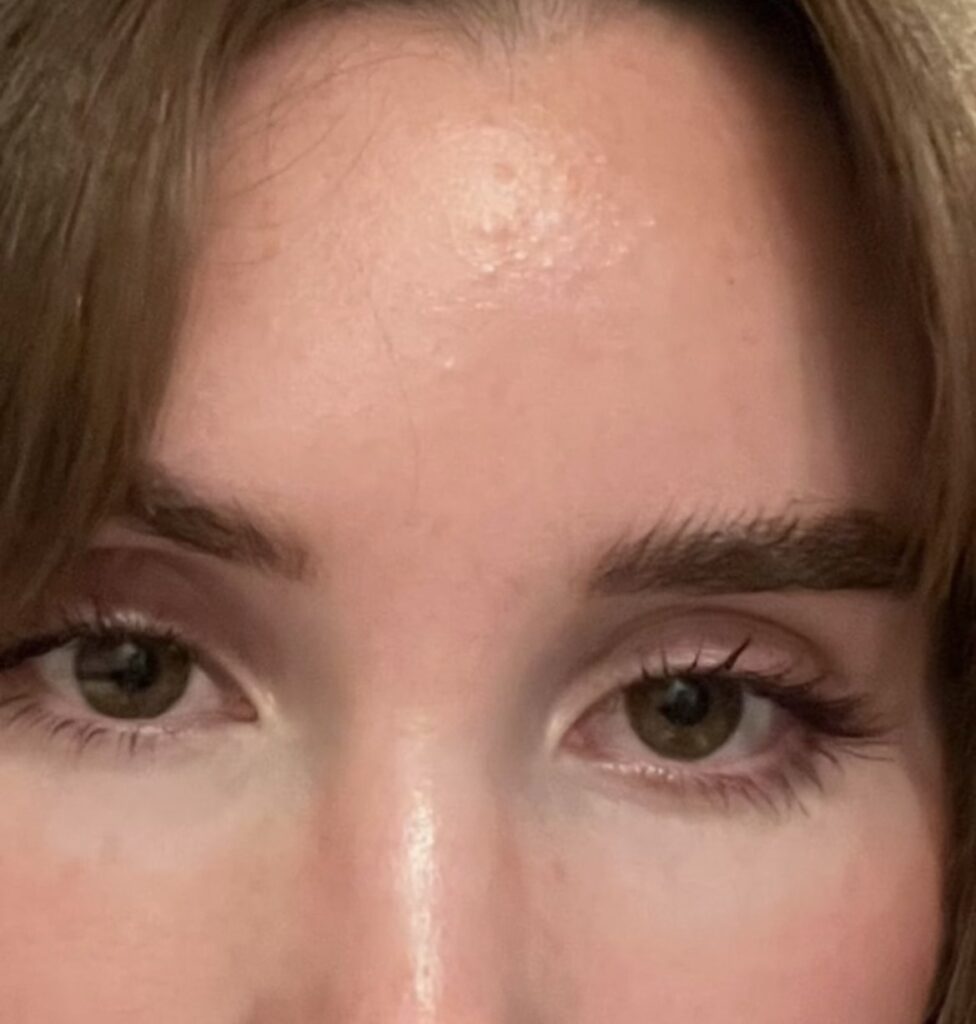
If you’re sick of spending too much on a fungal acne safe moisturizer, consider these cheaper options.
Remember that price isn’t an indicator of quality with skincare!
Some of the links are affiliate links, meaning I may make a small commission should you choose to purchase something, with no cost to you.
1. Geek and Gorgeous Hydration Station
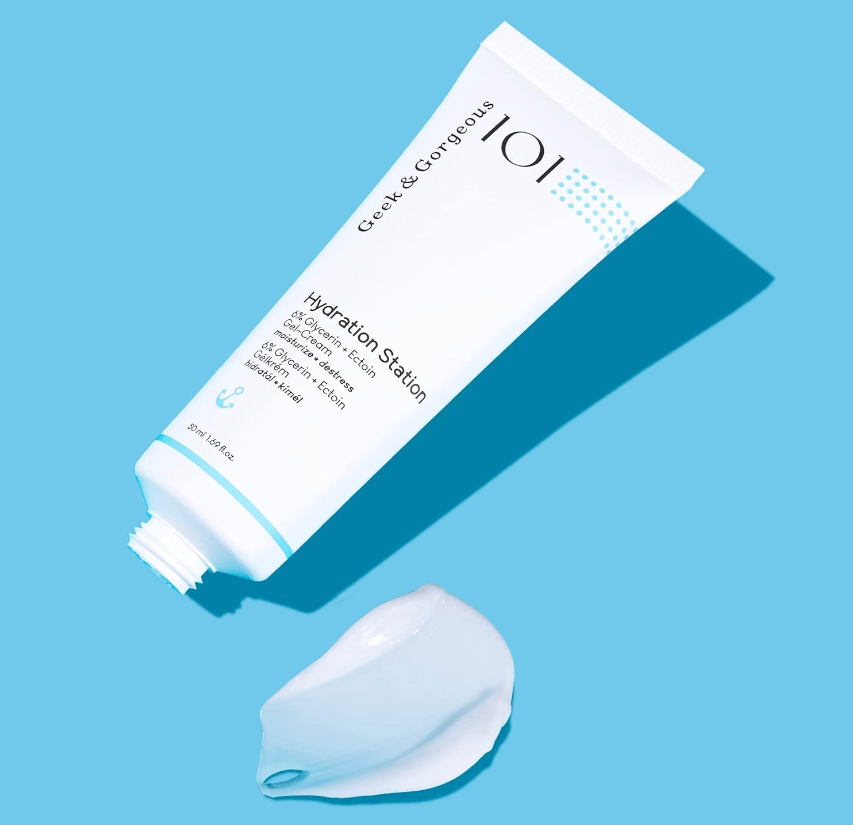
Geek and Gorgeous is a cult favourite brand amongst hardcore skincare enthusiasts.
Their skincare products are ideal for sensitive skin because they never contain fragrance or essential oils.
Hydration Station is a fungal acne safe moisturiser that’s only £8.75 on Amazon.
I love its simple formulation that’s both hydrating and good for the skin barrier.
2. e.l.f. SuperHydrate Gel Moisturiser
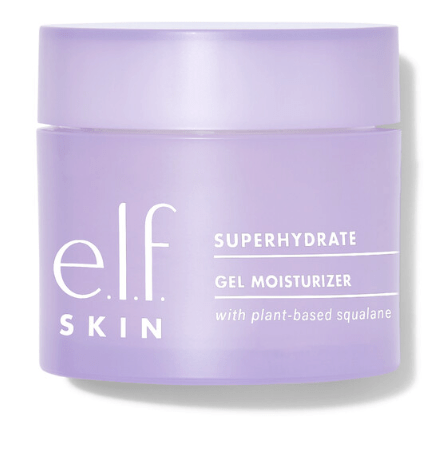
e.l.f. have made some really amazing products over the years across skincare and makeup.
This gel moisturiser for fungal acne contains squalane, which is only of the only oils that doesn’t ‘feed’ malassezia.
It also contains centella asiatica (cica) which is super soothing and also strengthens the skin’s protective barrier.
3. Purito Oat-in Calming Gel Cream
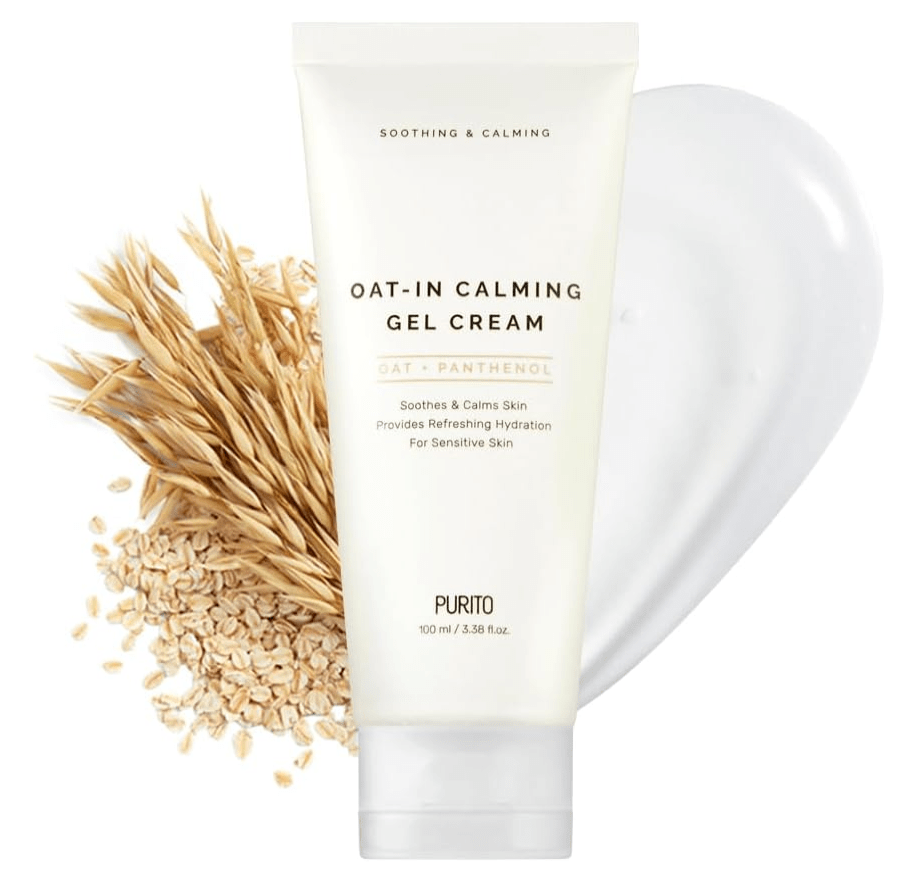
I love the Purito Oat-in Calming Gel Cream on its own, and even more when I found out it’s fungal acne safe.
I talk about it in a little more detail in my post about moisturisers for acne prone skin.
This one is probably not quite rich enough for super dry skin, depending on your personal preference.
Best moisturizers for fungal acne for slugging
It’s super annoying if you had a good slugging routine going and then fungal acne put a stop to it!
Luckily there is one popular product for fungal acne and slugging.
4. Eucerin Original Healing Cream
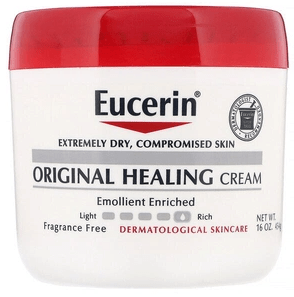
Not only is this thick cream perfect for slugging, but it also contains piroctone olamine.
Piroctone olamine is in a lot of antifungal creams because it is an anti fungal agent.
This means that not only will it lock in your skincare, but it’ll also provide some yeast-fighting benefits.
It’s tough to find skincare that doesn’t trigger fungal acne, but also fights it with antifungal properties!
Best moisturizers for fungal acne for oily skin
Although I would recommend both the e.l.f. gel moisturizer and Purito, there is one that’s even more well suited to oily skin.
It can be really hard to have multiple skin conditions going on. Trust me, I have:
- Perioral dermatitis
- Seborrheic dermatitis
- Fungal acne (duh)
- Clog prone skin in general
So if you have regular acne (or acne vulgaris) on top of fungal acne, it can be hell!
5. SkinFix Barrier Skin Restoring Barrier Gel Cream
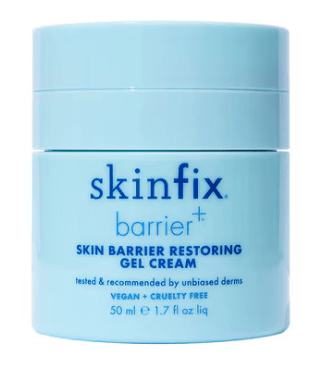
The name is a bit of a mouthful but I think this is an amazing moisturizer for fungal acne-prone skin.
It is a little pricey, but it contains both zinc PCA and niacinamide.
They both help to control oil production, which in turn helps reduce acne breakouts.
As well as this, zinc is an antifungal agent which will help control the fungal acne itself.
Aside from this, it has hyaluronic acid and allantoin to soothe and hydrate.
6. Uriage Bariederm-Cica Daily Gel-Cream
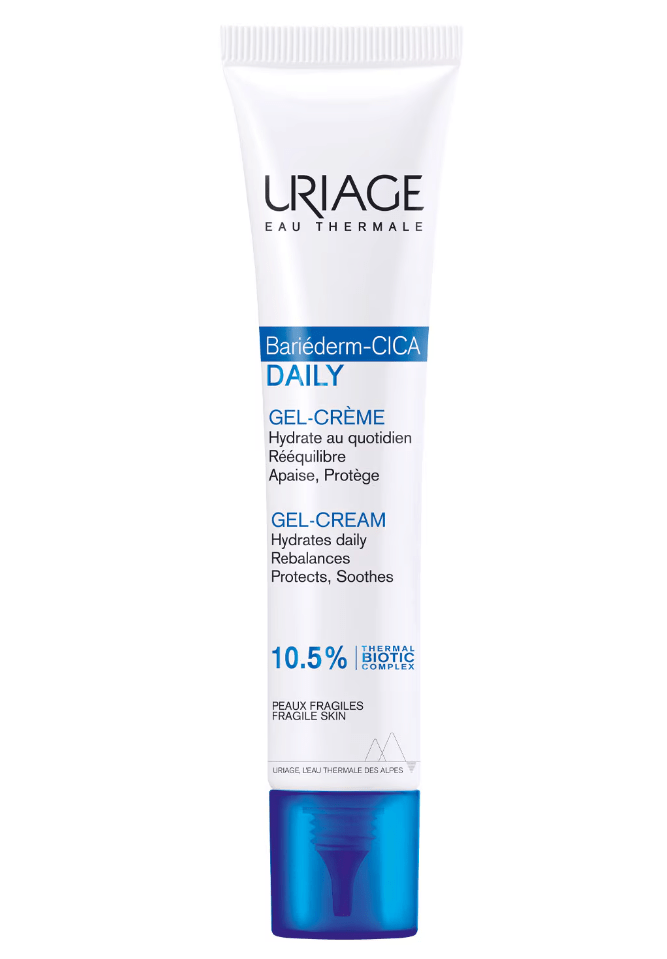
Uriage Bariederm-Cica Gel is a slightly cheaper alternative which still contains zinc.
As one of the best moisturizers for fungal acne, it’s super lightweight and free of fungal acne triggers.
It also contains cica (centella asiatica) which is good for redness.
7. Kiehl’s Ultra Facial Oil Free Gel Cream
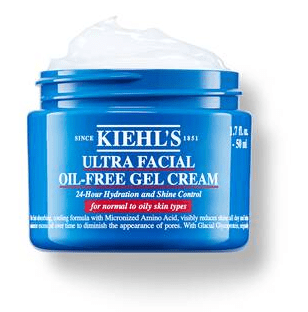
Kiehl’s as a brand is quite hit or miss for me, personally.
I used to really like their SPF30, but the non-SPF version of it broke me out awfully.
I share my journey undoing all of that on social media, if you’re interested!
This gel cream is targeted at those with oily skin, due to the lightweight gel texture.
It supposedly contains micronised amino acids which can help control sebum, but I’m unsure how scientifically accurate that is.
Overall it’s fairly simple with few ingredients, and some glycerin (which we love).
There is a small amount of salicylic acid but it does not state what percentage.
It may just be used as a preservative here.
8. I’m From Vitamin Tree Water Gel
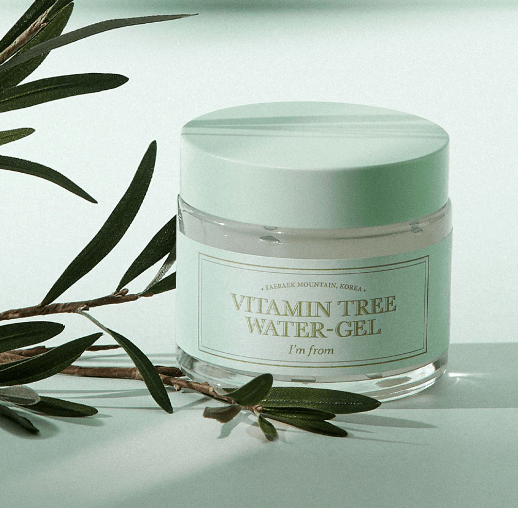
I’m From is a very popular Asian beauty brand, famous for their mugwort products especially.
This gel moisturizer is free from fungal acne triggers and ideal for oily skin types.
This contains an unknown amount of the vitamin C derivative, 3-O ethyl ascorbic acid.
Combined with the niacinamide in this product, it may be helpful for fading dark spots.
Best moisturizers for fungal acne for dry skin
If you’re looking for something a little richer in texture, here are some fungal-acne safe products.
It’s hard to find a rich cream that won’t also cause further breakouts or side effects, so I’ll share my (personal) opinion where I can.
9. Thank You Farmer Phyto Relieful Cica Cream
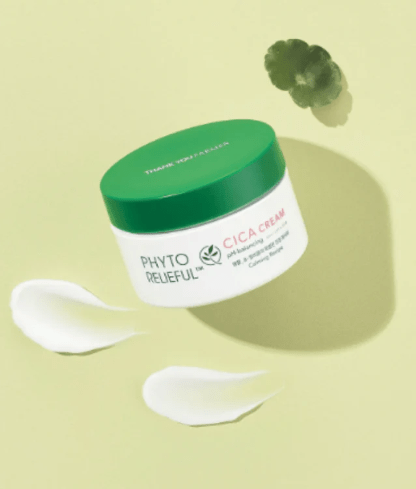
This may have a better texture if you’re struggling to find the right moisturizer and prefer thick creams.
Most of the best fungal acne-safe moisturizers are quite thin and light, as I’m sure you’ve noticed.
One thing I’m not super keen on about this moisturiser is the range of fruit extracts.
There’s nothing hugely wrong with fruit extracts, it’s just that they can increase the chances of your skin not liking something. Plants can also be common allergens.
Fungal acne-safe products tend to have less ingredients for this exact reason.
However it might work for you and so there’s no real harm in trying.
10. Curél Intensive Moisture Facial Cream
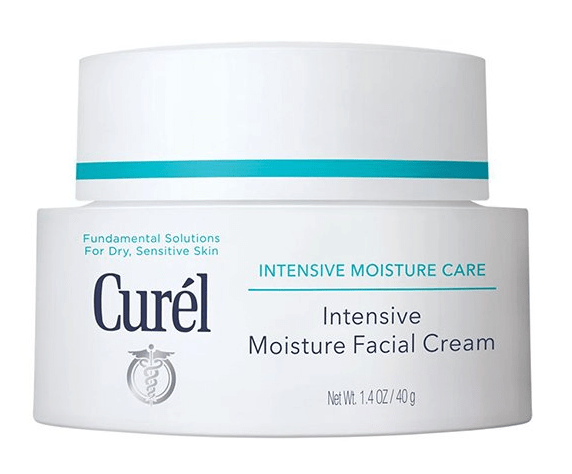
I love the brand Curél and I think of this cream as a slightly less risky version of the Thank You Farmer.
The main difference is that it has a very simple, and much shorter, ingredients list.
This product mostly uses silicones to trap moisture into the skin and works well for most skin types.
However, some people with acne-prone skin may not respond well to silicones. It’s really the luck of the draw.
This moisturiser has no additional benefits other than simply moisturising.
However, well moisturised skin allows it to better exfoliate dead skin cells itself, which is really important.
Having a damaged skin barrier can prevent this, and cause further breakouts and clogs.
Best moisturizers for fungal acne without niacinamide
I personally love niacinamide for brightening the skin tone, but some people just don’t get on with it!
If you’re sure niacinamide isn’t for you, consider some of these moisturizers for fungal acne without it.
11. Krave Beauty Oat So Simple Water Cream
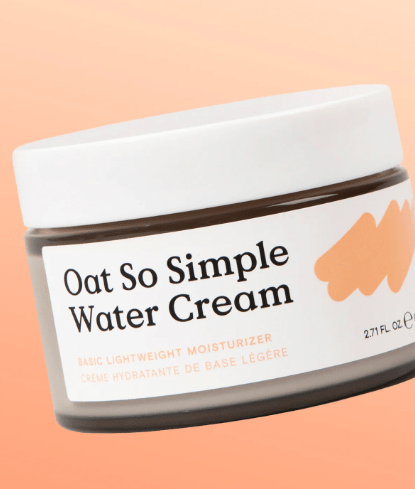
I think Krave Beauty are very mindful when they formulate products, which is why this one has such a simple formula.
The founder, Liah Yoo, has acne prone skin, so I imagine they made this with that skin type in mind.
The Oat So Simple Water Cream is niacinamide free, and super lightweight.
It is the best moisturizer if you break out with absolutely everything!
It should also not aggravate your fungal acne, so you can move towards clear skin.
12. First Aid Beauty Hello Fab Coconut Water Cream
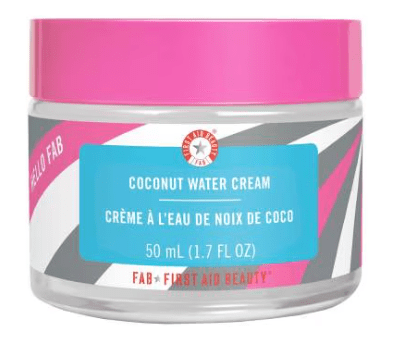
Another water cream without niacinamide, but with a more complex formula this time.
This cream by FAB is a good moisturizer for fungal acne which contains a few coconut extracts.
Coconut is known to be anti microbial, but I’m actually not sure if that also applies in skincare.
Luckily, there is no coconut oil – which can really aggravate all types of acne.
This cream also contains licorice root extract, which has anecdotal evidence for brightening skin.
Best moisturizers for fungal acne in the US
If you’re in the US and looking to pick up a fungal acne moisturizer in Target, for example, I’ve got a few choices.
13. Peach & Lily Glass Skin Water Gel Moisturizer
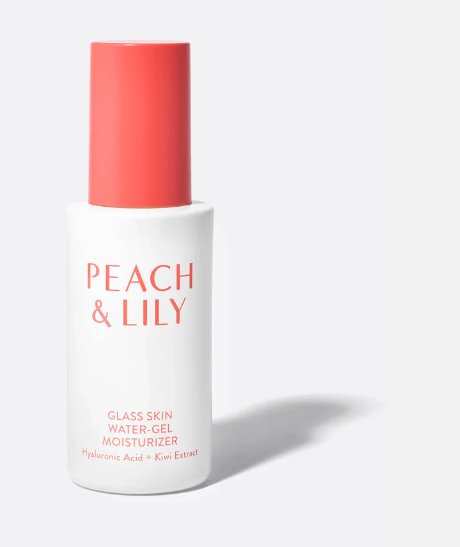
In the world of fungal acne skincare products it’s quite hard to find ones that also feel luxurious to use.
Peach & Lily constantly surprises me with how aesthetic AND good their products are.
I’m also a fan of their oil cleanser, which I talk more about in my post the best oil cleansers for acne prone skin.
Typically I avoid products with lots of flower extracts and things, just in case my skin doesn’t like them.
However, not everyone has this same taste and you might enjoy it more.
The Glass Skin Water Gel moisturizer is a gel-like texture that almost feels like a serum.
14. Malezia 5% Urea Moisturizer
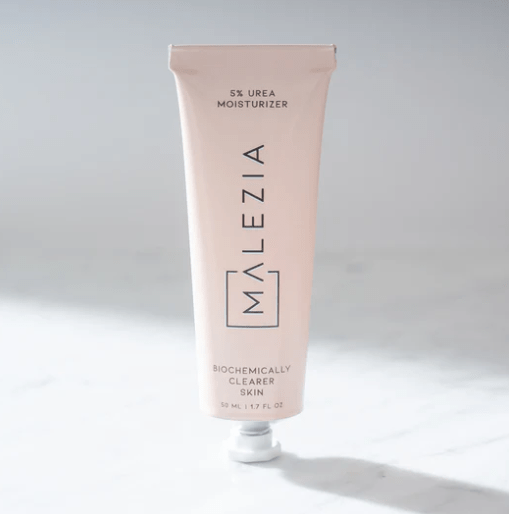
You might have come across Malezia while searching up the best moisturizers for fungal acne already.
This is because Malezia is a brand founded by the owner of Simple Skincare Science.
He encountered fungal acne and documented all about it, then created a fungal acne safe skincare product range.
The only downside of this moisturiser is that it can be hard to get!
That’s why I recommend it in the US section of this blog.
Not only does it have a super short ingredients list, but it also contains urea.
Urea is a really gentle exfoliant that’s amazing for fungal acne.
Not only does it exfoliate, but it also hydrates super well.
15. Almond Clear Soothing Daily Moisturizer
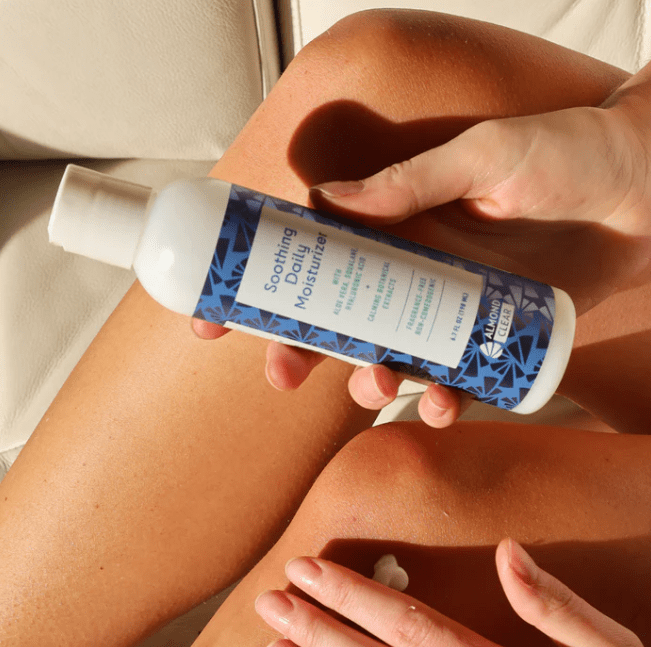
On the Simple Skincare Science website, they also recommend this one by Almond Clear.
Like many others on this list, it is a simple formula that contains squalane.
It also contains aloe vera juice, so it should be overall quite soothing.
There’s not a whole lot to say about this one – it’s super simple!
16. Skynbio HydraShield Oil-Free Moisturizer
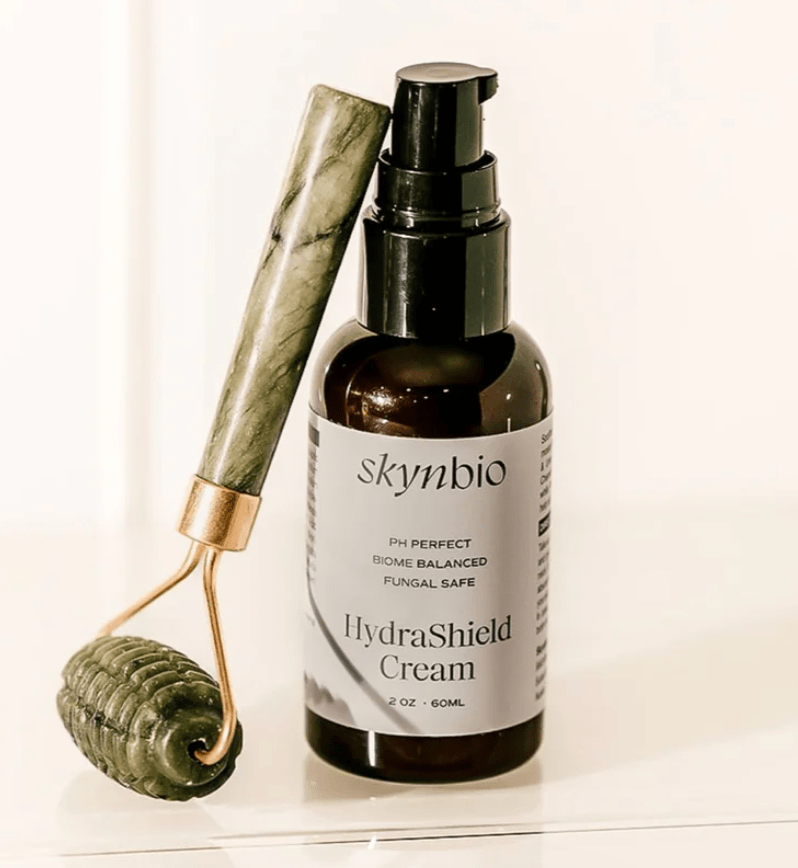
Skynbio is a new brand dedicated to creating fungal acne safe skincare.
The HydraShield Oil-Free Moisturizer isn’t just free of niacinamide, but of course all the typical fungal acne triggers.
It uses sodium hyaluronate, urea and sodium PCA to provide deep hydration without the use of oils.
I also love that it has a very minimal ingredients list, so it’s unlikely to cause any additional problems like regular acne breakouts.
Across these 16 best moisturizers for fungal acne, I hope you find one that works for you.
Now I’ll move onto some most asked questions.
Do I have fungal acne or closed comedones?
Fungal acne vs closed comedones can be difficult to tell apart.
However, I do think there are some easy ways to differentiate them.
Forehead vs cheeks
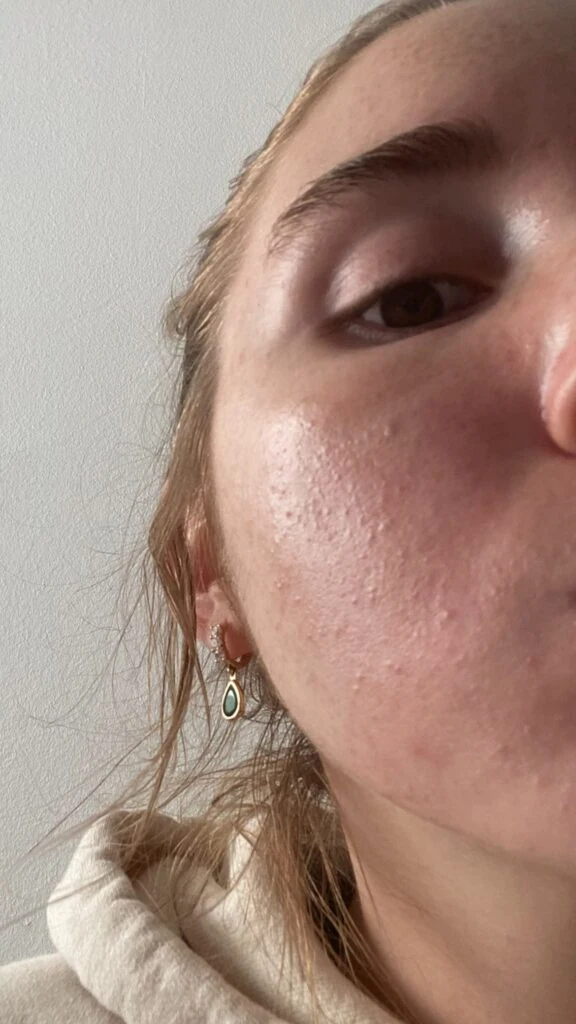
Fungal acne is super common on the forehead. Often it will only be on the forehead and nowhere else.
This doesn’t mean it can’t be elsewhere, just that its very common to only have it there.
Fungal acne out of nowhere
Closed comedones take a while to form, whereas fungal acne can literally appear overnight.
Luckily this also means it can dramatically reduce overnight, whereas closed comedones can’t.
If you feel like the bumps on your face move and change quite a bit, it could be fungal.
Irritation and redness
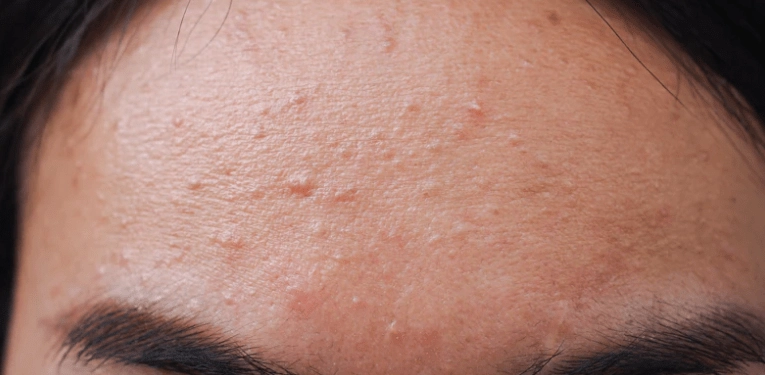
Closed comedones are often not irritated, they just look kinda happy sitting there on the skin.
Pityrosporum folliculitis (fungal acne) are more commonly red bumps, or bumps with a reddish background colouring.
They can also be mixed in with tiny, tiny whiteheads.
Overall they appear ‘active’ or alive, or at least they do to me. Closed comedones feel kinda… dead or still?
Itchiness
Fungal acne can be itchy, but it is not always. I only find it itchy sometimes, and even then it’s not overwhelming.
Acne vulgaris vs fungal acne look
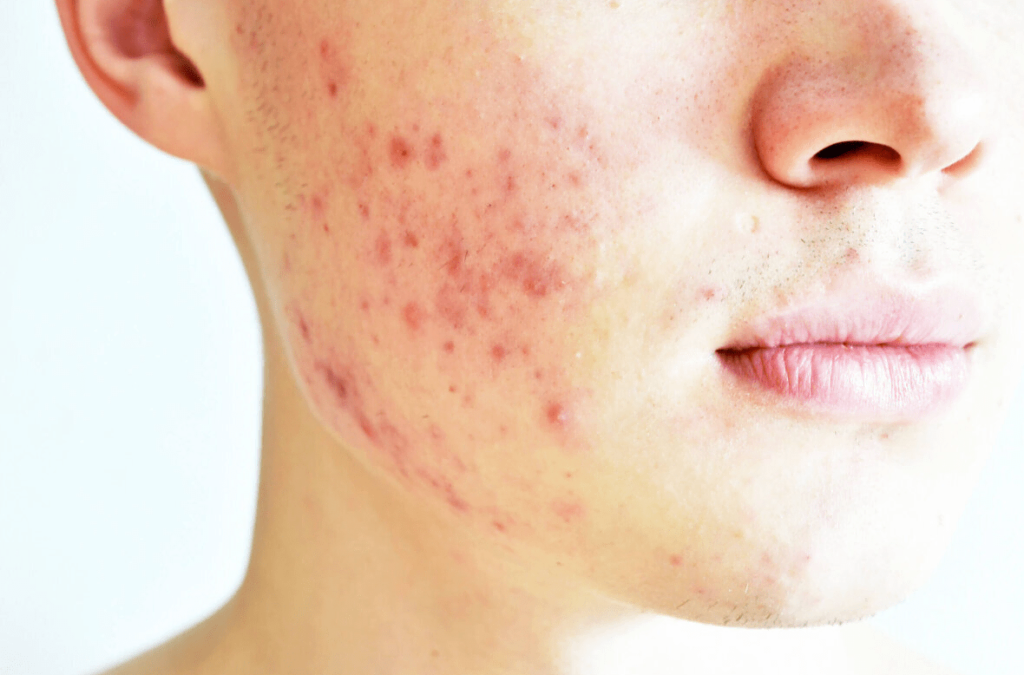
Regular acne usually looks like a mix of blackheads, whiteheads, cysts and closed comedones.
Even hormonal acne is a more mixed bag than fungal acne.
Fungal acne are usually quite small, similar looking bumps.
They’re often accompanied with some skin irritation.
What is fungal acne caused by?
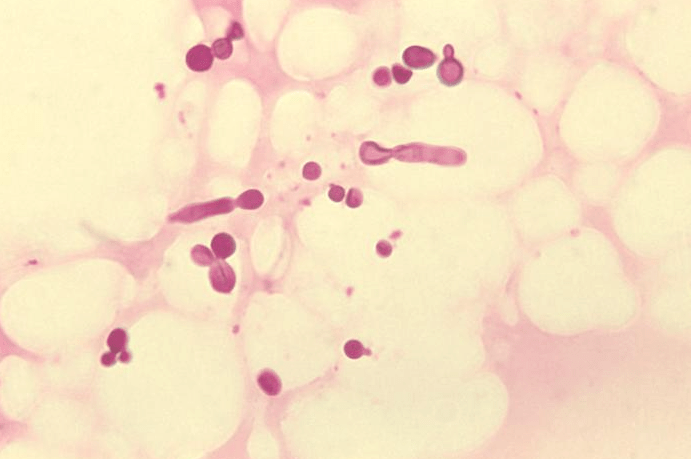
Fungal acne is mostly caused by an overgrowth of yeast.
Sometimes, however, it’s simply your own body being irritated by normal levels of yeast in the skin.
Malassezia yeast is a type of microorganism that lives on our skin.
It’s normal for us to have yeast living on us, even if it sounds gross.
This is why the term ‘fungal infection’ doesn’t really make sense, as the yeast is supposed to be there.
Fungal acne occurs when this yeast either gets out of control, or our skin is irritated by it.
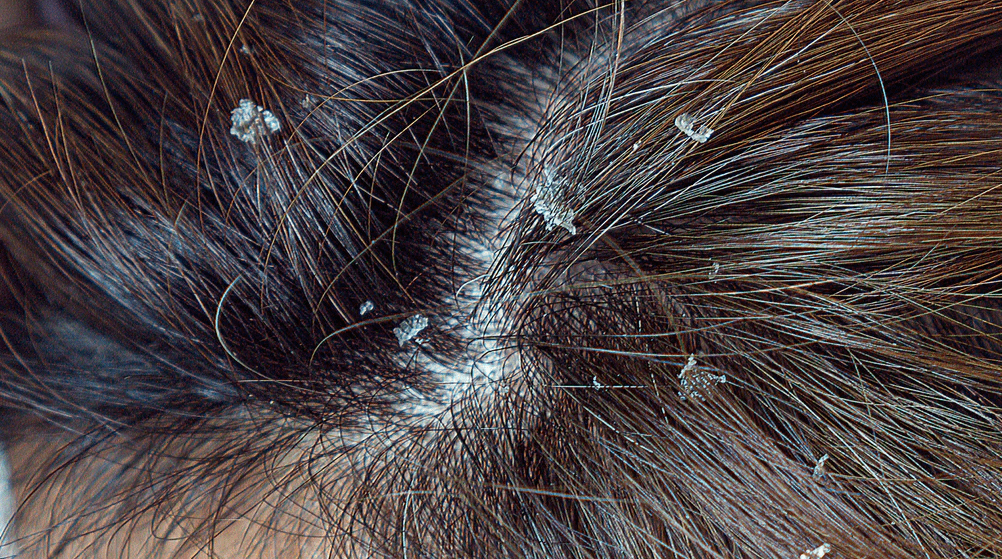
Irritation due to yeast is actually what scalp dandruff is, which is why dandruff shampoos can improve fungal acne on the face.
Lastly, it’s important to note that fungal acne isn’t really true acne, so the name is a bit of misnomer.
Fungal acne triggers in your environment
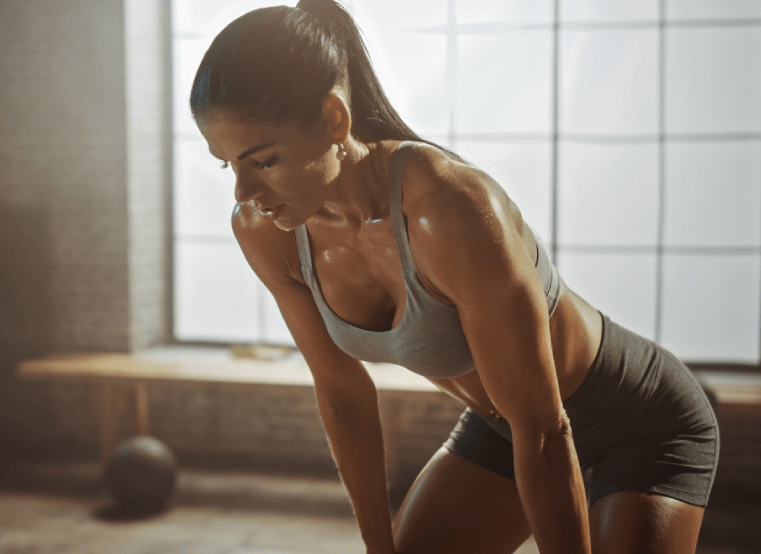
Fungal acne triggers can be products with the wrong combination of ingredients, hence this post!
But you shouldn’t ignore fungal acne triggers in your environment, such as a humid climate.
I personally notice that I only have fungal acne out of nowhere when I sweat a lot.
I joined an old school gym that didn’t have air con, so I got super sweaty during my sessions.
This is what caused the first outbreak – sweating for extended periods of time.
I switched to a well air conditioned gym and my fungal acne became less of a problem, but it’s still there because I’m doing cardio multiple times a week.
I also had another outbreak on holiday because I wore a tight cap to avoid the sun.
Possible remedies
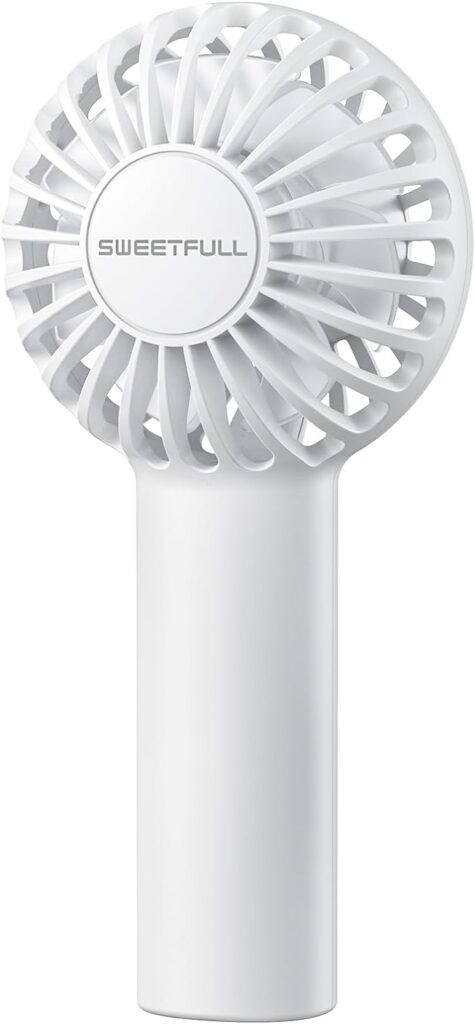
Some things I have considered to remedy this issue are:
- Buying a handheld mini fan so that I’m not sweating as I get the bus, walk in the park etc
- Switching to a well air conditioned gym
- Never wearing a hat again (lol)
- Even getting botox in my forehead (where I sweat the most) because botox reduces sweating! Although I haven’t done this yet
I also know that when I stop doing cardio after my upcoming holiday, my fungal acne will greatly reduce.
The sweat creates a damp environment that the yeast thrives in.
In turn, the yeast creates a type of infection of the hair follicles and irritates the skin, causing bumps that look like acne.
What about oral antifungal medications?
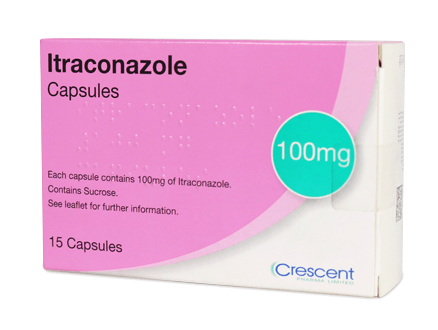
Long story short, these have varying degrees of efficacy for facial fungal acne.
My dermatologist shared this with me, but also it’s easily searchable on reddit.
Lots of people find the fungal acne subsides during the medication, and comes back afterwards.
This is why I think it’s key to find products that aren’t likely to trigger fungal acne.
On top of this, try to control your environment by avoiding caps, sweating etc.
For some people, a course of oral antifungal medications will totally solve the problem – but not always.
How to use Nizoral for fungal acne
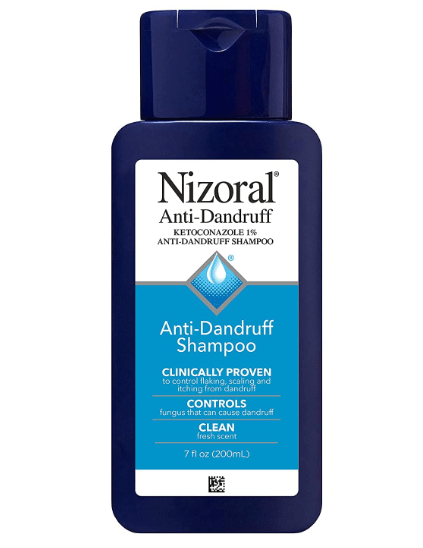
If you’ve gone down the rabbithole of using antidandruff shampoo for fungal acne, I can tell you all about it.
Nizoral is recommended because it contains 2% ketoconazole, a strong antifungal agent.
It absolutely works, and it works very well.
In fact, this is a great way to test if have closed comedones vs fungal acne or treat your fungal acne.
- Complete your regular night time cleansing routine.
- Using a tiny blob of Nizoral, mix it with water and create a lather.
- Then apply it to the affected area.
- Leave it for 3 minutes then rinse off and do the rest of your skincare.
Repeat this nightly for 3-5 days. If you notice an improvement then it is likely fungal acne.
It shouldn’t really take more than five days to see an improvement, ketoconazole works quickly.
The main issue with Nizoral is that it can be irritating, so you don’t want to use it forever.
The ideal solution is to use Nizoral to get it under control, whilst adjusting your skincare and environment.
My top tips for fungal acne on face
Here are some of my overall top tips that might also help you:
- Triggers – Fungal acne is quite different for everyone – for example, I can keep my products the same and it’s fine, but as soon as I start sweating at the gym it all comes back. Others won’t go away unless they swap all products. The key is to look for your triggers and make adjustments.
- Understand fungal acne – FA loves damp, humid environments. If you don’t have exposure to these regularly but still have FA, it is likely your products.
- Test first – If your fungal acne doesn’t respond to ketoconazole after 5 days, it’s probably just closed comedones.
- Make slow adjustments – Don’t change your whole routine at once, or else you’ll get overwhelmed and won’t know what’s working or breaking you out.
- Retinoids – I am a hardcore retinoid fan and I believe my retinoid really helps to keep my fungal acne clear, as well as other acne and clogged pores. Check out my best retinoids for clogged pores post. If you don’t have any kind of retinoid or exfoliation in your routine, your skin will stay ‘clogged’ looking for longer, even after the FA is gone. This is because the FA gets into the hair follicles and causes inflammation and bumps.
Read more tips on how to get rid of fungal acne on your forehead here.